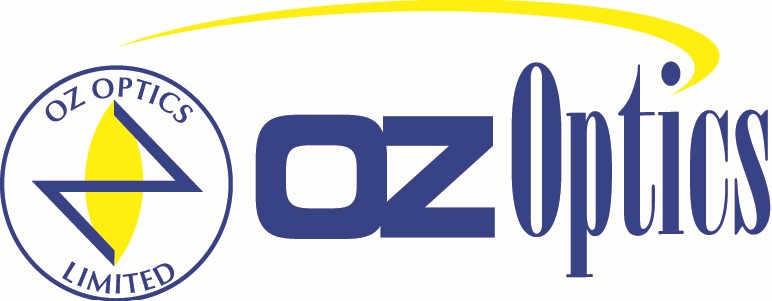NOVA Automated Polishing System
Interchangeable Fixtures for Connectors, Waveguides, Bare Fibers, Other; Film Size 4 Inch Diameter; Capacity up to 8 Components; Connector Apex Offset <50 µm; Connector Radius of Curvature 5-25 mm; Connector Protrusion/Undercut: 50--120 nm
KrellTech’s NOVA™ automated polishing system provides maximum flexibility for optical surface processing and supports a variety of polishing applications from connectors to waveguides, and bare fibers to custom components. NOVA™ is scalable for R&D projects, high-volume production and the rigors of harsh environments and field installation.
NOVA™ workholders feature KrellTech’s patented independent suspension at each connector position for controlled pressure and uniform contact. Combined with NOVA’s Microfeed™ fixture advancement, connector “airpolishing” and epoxy removal can be performed directly in the machine. Each position is optically aligned for optimal polish geometry using KrellTech’s patented process and calibration mechanism. Connector types can also be mixed and matched in a single fixture.
NOVA’s versatility provides the ability to support the polishing of many photonic components. A quick change-out of workholder fixtures provides processing capability for waveguides, optical chips, PLCs, lenses and fiber arrays. Workholders utilize a unique holding mechanism that can secure a wide range of component dimensions. The polishing angle is adjustable and custom fixtures can be fabricated for specialized applications.
Bare fiber can be polished at variable angles using specialized workholders and adapters. A variety of fiber types from standard single mode (SM) to polarization maintaining (PM) and sapphire to PCF can be processed into wedge and chisel tip shapes. A quick swap-out of adapters allow the polishing of fiber diameters from 80 um to >3 mm.
NOVA™ features an intuitive user interface for creating polishing programs. All parameters including cycle time, pressure and speed settings are easily inputted for all component types and desired surface geometries. A unique “manual mode” allows the adjustment of polishing parameters in real-time during NOVA™ operation. This feature streamlines process development efforts and facilitates easy and quick program creation and refinement.
A new NOVA™ operation software kit is available that upgrades NOVA™ polishers with the enhanced microfeed feature. This polishing routine provides greater programming flexibility for advancing components to the polishing surface at slower and more controllable rates. While version 1 NOVA™ software was limited to 10 pre-programmed microfeed rates, with the slowest being 100 µm/s, version 2 software allows to customize rates as slow as 5 µm/min. This yields precise removal of material stock and continual component advancement. The enhanced microfeed is ideal for larger optical surfaces, delicate bare fibers, and connector air polishing. V2 also provides the ability to create "pop-up" window prompts in between each polishing step, very useful as reminder to technicians to clean fibers, inspect polishing lengths, confirm geometry, etc. before initiating the next process step. New folder management allows programs to be organized according to connector types, fiber diameters, component, etc.
Bare Fiber Coning and Chisel Option
The optional Orbit™ bare fiber coning and chisel system enhances NOVA™'s bare fiber processing with conical and chisel tip shaping. Unique fiber tip geometries can be formed for lensing, sensing and light guiding applications.
The fiber rotation module can be mounted on standard NOVA™ variable angle and waveguide workholders. Fiber "spin" speed is user adjustable and can be set for continual rotation or the unique "360 auto-reverse" motion that prevent fiber twisting and torquing. All variables are entered and selected via a touchscreen on the Orbit™ controller. When combined with NOVA™ Auto-Angle Workholders, Orbit™ precisely positions the polishing fixture at the designed angle on a repeatable basis.
Inspection Options
Optional video inspection systems monitor the polishing process and inspect the polished surface directly in NOVA™.
NOVA™'s Profile Videoscope allows the real-time monitoring of component polishing. This videoscope aids with bare fiber/component positioning and confirms process completion. Teamed with measurement software, this system verifies the endface geometry of a broad range of photonics components. Teamed with measurement software, this system verifies the endface geometry of fibers, waveguides and arrays.
NOVA™'s Surface Videoscope allows the in-line inspection of polished surfaces while the component is still loaded in the polisher. This minimizes material handling and streamlines photonic production compared to the traditional process of transferring components to off-line inspection stations. Polishing and specification compliance can be determined in a single workcell.
Key Features:
Precision Optical Polishing
Wireless Tablet Control With Microfeed™
Telcordia Compliant
Interchangeable Fixtures for Waveguides, Bare Fibers and More
Air Polishing Machine
Polishing Pressure: Programmable & Automated, Linear Displacement With Micron Positioning Control
Polishing Speed and Cycling Time: Program Selectable
Polishing Motion: Random Orbital
Polishing Routines: Programmable (Step by Step Prompts), Microfeed™ Controlled Advancement, Manual Mode With Full Process Control
Film Size: 4 Inch Diameter
Connector Support: All Industry Standard Connectors, MIL-spec Termini and Ferrules, UPC & APC Geometries
Connector Capacity: Up to 8 Components – Selections Can Be Mixed & Matched in Same Workholder Fixture
Connector Apex Offset: <50 µm Maximum, <15 µm Typical
Connector Radius of Curvature: 10 to 25 mm (2.5 mm Ferrules), 7 to 20 mm (1.25 mm Ferrules), 5 to 12 mm (APC Ferrules)
Connector Protrusion/Undercut: 50 nm to -120 nm
Connector Back Reflection: <-60 dB (UPC), <-65 dB (APC)
Connector Insertion Loss: <0.25 dB Typical
Connector Process Time: Approximately 15 s/Connector
Waveguide Component Support: Waveguides, Planar Lightwave Circuits, Optical Chips, Fiber Arrays
Waveguide Component Dimension Range: Width 5 to 30 mm, Thickness 0.5 to 5 mm, Length >5 mm
Waveguide Angle Repeatability: ±0.3° (X/Y Axis Along Edge)
Waveguide Adjustable Polish Angle Range: 0° (Flat) to 45°
Fiber Type Range: Single Mode (SM), Multi Mode (MM), Polarization Maintaining (PM), Plastic, PCF, Chalcogenide, Sapphire, Specialty Fibers
Fiber Diameter: 80 µm to >3 mm
Fiber Angle Range: 0° (Flat) to 50°
Fiber Angle Repeatability: ±0.5° Typical
Equipment Footprint & Weight: 305 x 305 mm, 11.3 kg
Applications: Automated Optical Polishing of Connectors, Waveguides, Bare Fibers and More; Research and Development Projects; High-volume Production; Harsh Environments and Field Installation
Product number:
SW11368
Manufacturer:




